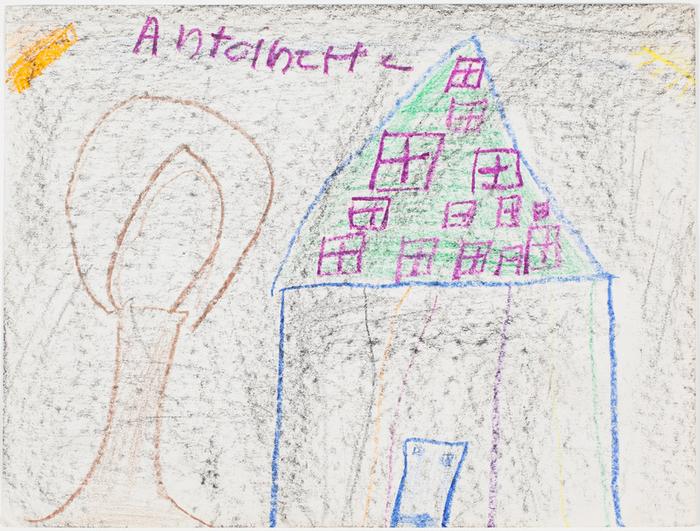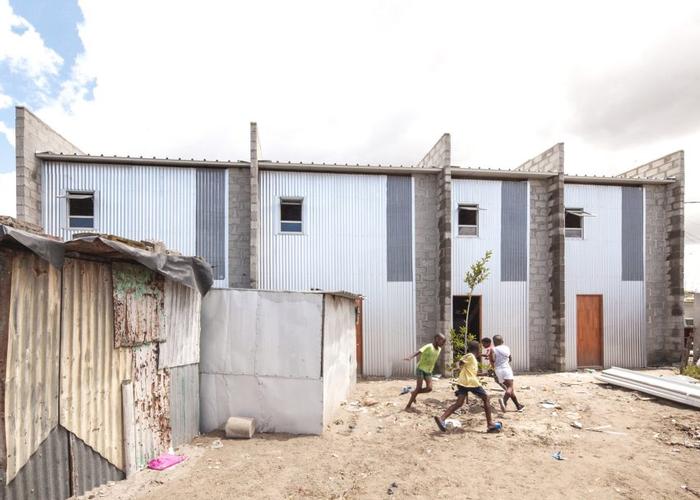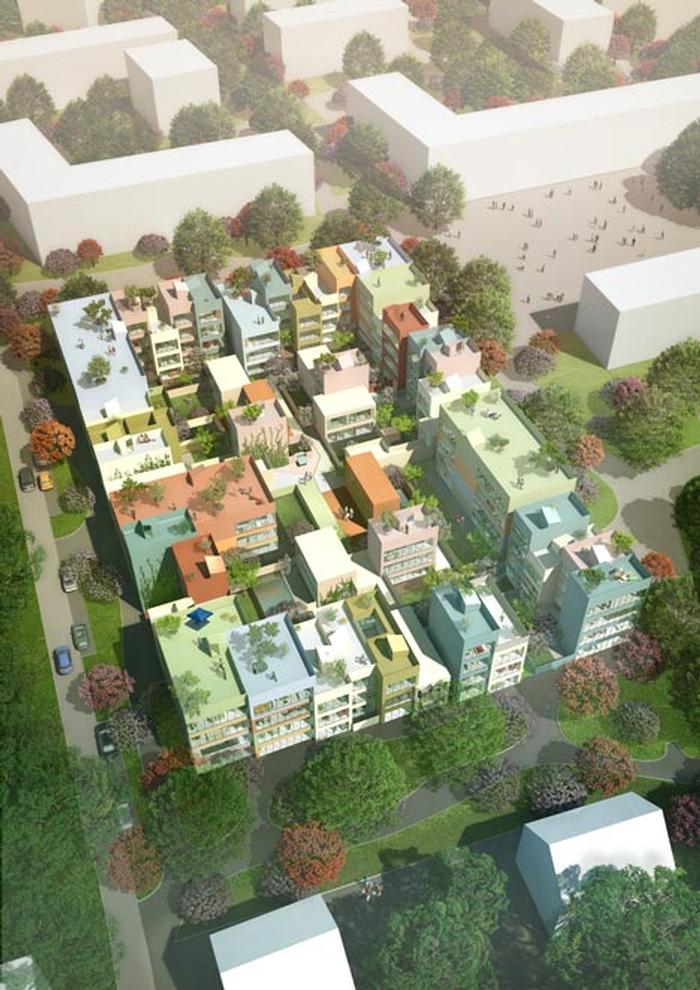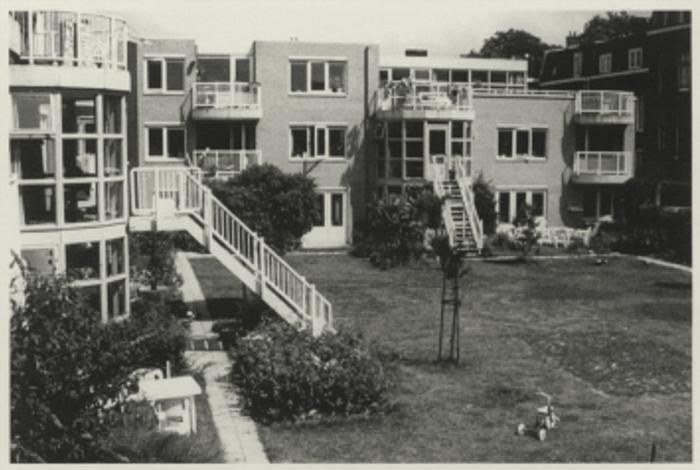[ID:4550] A Journey Towards Well-BeingBangladesh Dhaka, the capital of Bangladesh, is a city of diverse livelihood opportunities. But well-planned urban development and spatial justice for people of all income groups are not yet among Dhaka's strengths. The city's formal design meticulously leaves them out to seek shelter in the informal, and in most cases, illegal ways. But when it comes to affordable housing for the poor, there are complex psychosocial factors at play rather than only the economic. The income gap between the low and middle-income people narrows with the nation's growing GDP, which raises the question of how much lifestyle choices depend on financial ability in our social context.
Our locality is Kawlar, a unique neighborhood in Dhaka, lying within 2km of Hazrat Shahjalal International Airport. The history, location, and mix of communities contribute to the uniqueness of Kawlar. Before Hazrat Shahjalal International Airport started operations in 1980, it was a sparsely populated rural lowland. The proximity to significant infrastructures paired with the construction of the Civil Aviation Residential Quarter propelled this rural area into a new socio-political dynamic in the upcoming years. The population density was still lower before the last decade. Housing was affordable for all income groups, and there was a strong sense of community. The presence of Dhaka's satellite city Uttara Model Town northwards of the Airport somehow managed to keep dense urban sprawl away from Kawlar and adjacent areas. But the last decade has been reshaping Kawlar with increased land prices and unplanned urban settlements. Consequently, local community ties and affordable houses for the most vulnerable are diminishing, as well as Kawlar's rural memory.
This project will serve the diverse families of local rickshaw pullers, factory workers, day laborers, vendors, and housemaids. They currently live in slum-like dwellings, constructed and rented out by private landowners trying to profit off low investment, making the users susceptible to various uncertainties. Housing for middle-income people is affordable in Kawlar and adjacent areas compared to neighborhoods like Uttara. But in the case of low-income families, high land prices alongside the continuous arrival of rural migrant workers create demand for rentable housing rather than homeownership. Therefore, most of them associate their original village homestead as their home and Kawlar as their temporary stay for livelihood. Kawlar also has some local landowners whose families have been here for generations, and their lifestyle preferences are also evolving to match the new urban settlers.
In reality, the psychosocial distance between the social classes exceeds the economic. The plot beside the six-storied building I live in has small rooms made of corrugated metal sheets rented out to low-income families. We're practically neighbors, yet the fabric of our community remains detached. Hasna Khatun is a middle-aged woman who works as a household maid and lives in a similar slum-like dwelling in Kawlar. Her husband is a local shopkeeper, and they earn between 20,000BDT to 26,000BDT monthly altogether, with which they bear the living, housing, and education costs of their two children. The increasing shortage of affordable housing has recently hiked her house rents from 2500BDT to 6000BDT, exclusive of the electricity, water, and gas bills. There's a small two-room apartment in my building with a kitchen and a bathroom adjacent to the ground floor garage, renting at 8000BDT per month. Upon one encounter, Hasna had expressed the will to spend a bit more to rent the apartment than live in cramped rooms with no daylight. Such willingness to pay more surely varies between users. But our social practices may pose a far more significant issue: are the higher income group of apartment dwellers ready to accept the people working in our homes, factories, and streets alike as renters of these small apartments and as their neighbors?
Our project must play the role of the thread weaving these layers of socially segregated communities together to stimulate the art of social change. In this mammoth task, Abhijit Banerjee, Esther Duflo, and their J-PAL's approach of breaking the overwhelming challenges down into manageable crumbs inspire us. We are designing the process as a social well-being campaign whose product is housing. Our strategy is to create a framework of a feedback loop involving the users and other stakeholders in phases:
Therefore, the journey outgrows the destination. The purpose of this journey must be to explore and empower. We can perceive the destination and make preparations to reach it. But our journey might lead us towards new paths, unforeseen goals, and reshape our understanding of the socio-economic constructs around us.
We'll need architects, engineers, psychologists, educators, economists, finance and marketing experts for project management, design, technical assistance, communicating and interpreting clients' needs, maintaining budgets, and developing a profitable model for stakeholders. We can potentially team up with existing organizations that share common goals. Organizations like the Platform of Community Action and Architecture (POCAA), BRAC Social Innovation Lab (SIL), BRAC Ultra-Poor Graduation Programme, CARE Bangladesh, etc., can contribute with their expertise and experience. Our chosen sites are three empty plots similar to the existing ones. Multiple sites can help maintain mixed-income neighborhoods and avoid stigmatization. But for the pre-design research phase, we propose a small-scale slum-improvement project in a current slum. It can help us get acquainted with the technical needs and lackings in existing low-income dwellings and the neighborhood context. Initially, the landowners and NGOs, like BRAC, can be the financial investors, while the local government helps with incentives like land-tax exemptions. But in the long term, the housing should be designed to integrate versatile income-generating schemes that are profitable for all stakeholders.
The Warming Up
The pre-design research phase includes examining existing literature and case studies and the field survey on the target users' current lifestyle and living conditions. The trouble with our existing social housing policies is that it only accounts for financial ability, excluding social expectations. Active involvement of the user groups in the housing process is key to changing this narrative. Through our proposed slum improvement step, we can also identify and pre-lease the renters and owners of the new housing. The application of social research factors in this step is vital. Before our housing design begins, we need to locate the kernels of poverty myths in our context, map out clients' needs and aspirations, and the gaps from reality. For this, we must engage the privileged members too. This phase is explorative research for the designers and a well-being workshop for the users. Learnings from neuroscientific studies of the adverse effects of stress on the brain, behavior, & cognition when faced with limited resources guide us.
Studies on scarcity by the American Psychological Association have shown the adverse effects of poverty and poor living conditions on mental health. But when faced with limited resources, humans can also find innovative ways to adapt and make the optimum use of what's available. A school in Dhaka's Geneva Camp holds a simple example where garage shutter doors are used as partition walls of classrooms to convert the building into a community hall when needed. Lack of space led the users to find affordable yet unconventional solutions without any trained designer's involvement. Sendhil Mullainathan (2013) and his colleagues have found that those with less money are considerably more likely than those with more money to know how much goods cost. People at a train station in Boston were asked what the original fare was when they initially got into a taxi in a study. People with low socio-economic status were more likely to guess the amount correctly. Therefore despite the adverse effects, there may be some cognitive and social assets acquired by low-income people. We'll use activities like focus group discussions, cultural exchange, saving schemes, collective tasks, individual interviews, and observations to engage our users and help them identify and strengthen each of their intangible assets.
Apart from demographic data, we'll start by asking questions on:
The idea is more than asking questions; it's about defining how and when to ask them and interpreting and evaluating the answers. Trained psychologists, educators, and social workers will follow modules using established methods to achieve this. Cultural tools of expression like singing, drawing, folklore, dramas, stitching "Nakshi-Kantha," etc. can ensure the lively engagement of users.
Acceleration
Once the pre-design research phase data is compiled and analyzed, our architectural design phase begins. The client now will directly participate in giving feedback on design through drawings and models. Construction workers among the slum dwellers will get incentives directly contributing to the construction. People without prior experience can also receive vocational training through our process. Users identified to have executive skills will be involved in project management. Newly developed technical and organizing skills in the construction process are also a part of our capacity-building initiatives.
Steady Speed
We don't consider our journey to end when our construction process finishes. The users living and adjusting to the new housing, tenure policies, maintenance, and community achievements are part of our journey. It's the more steady and long-term dynamic. Periodical evaluations on the residents' physical, mental, and social well-being will help us evaluate the practical outcomes of our designed housing. After the construction phase, social housing takes unexpected turns in many cases. From examples like the Bhashantek Rehabilitation Project and Khurushkul Shelter Project in Bangladesh, we learn how slum-dwelling or rural people adapt to multistoried apartments and what factors make that adaptation difficult. The ultimate goal is to let social housing evolve with current contextual needs. Long-term policy interventions may not be immediately feasible. But findings of our project can question existing policies and guide future ones. Therefore, the journey of housing delivery carries on.
The strategy and steps we've taken to approach the housing project thus closely involve users in every phase. The feedback loops are incomplete without user participation, which means the users must play an active part in the design process.
In her UN-Habitat Lecture on Urban Informalities (2014), Janice Perlman spoke, "To plan is human, to implement is divine." Her words precisely express how challenging it gets to implement large-scale projects in cities like Dhaka. When the project involves the welfare of a vulnerable group, the challenges can multiply, and often, it is easy to lose focus on desired goals. Something as personal yet socio-politically significant as housing must be more than a tabulated list of requirements to fit within a given area and budget. We've compared the housing process with a journey because it's dynamic and continuous. The construction of its built form is merely a landmark on our path. The residents continue using the built space, and designers, policymakers, social researchers, etc., take away the knowledge gained from the experience to enrich future ventures.
References:
If you would like to contact this author, please send a request to info@berkeleyprize.org. |




